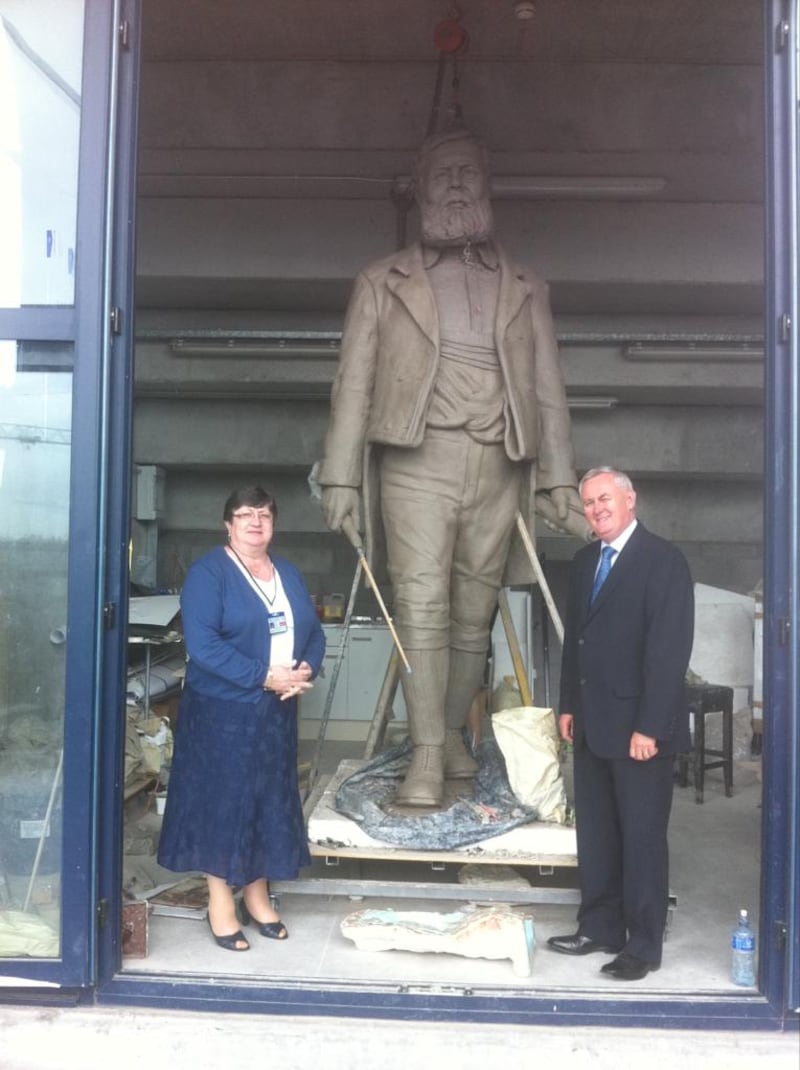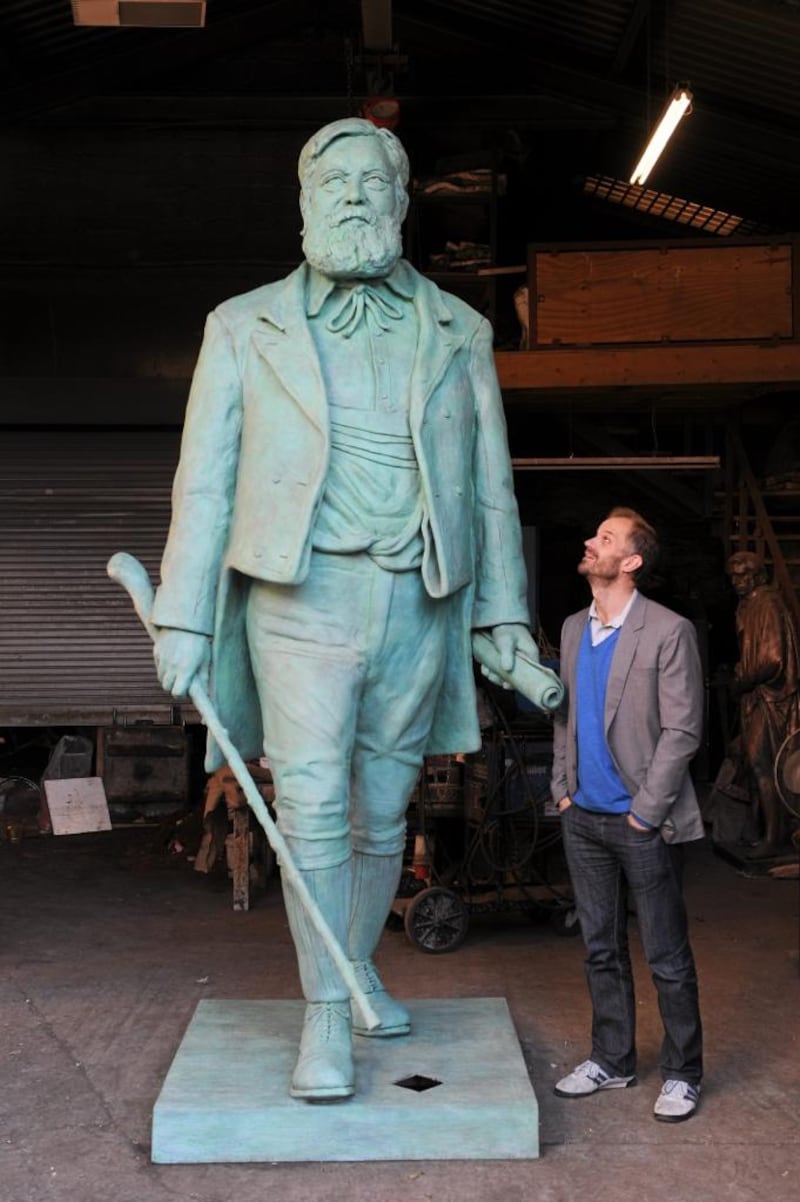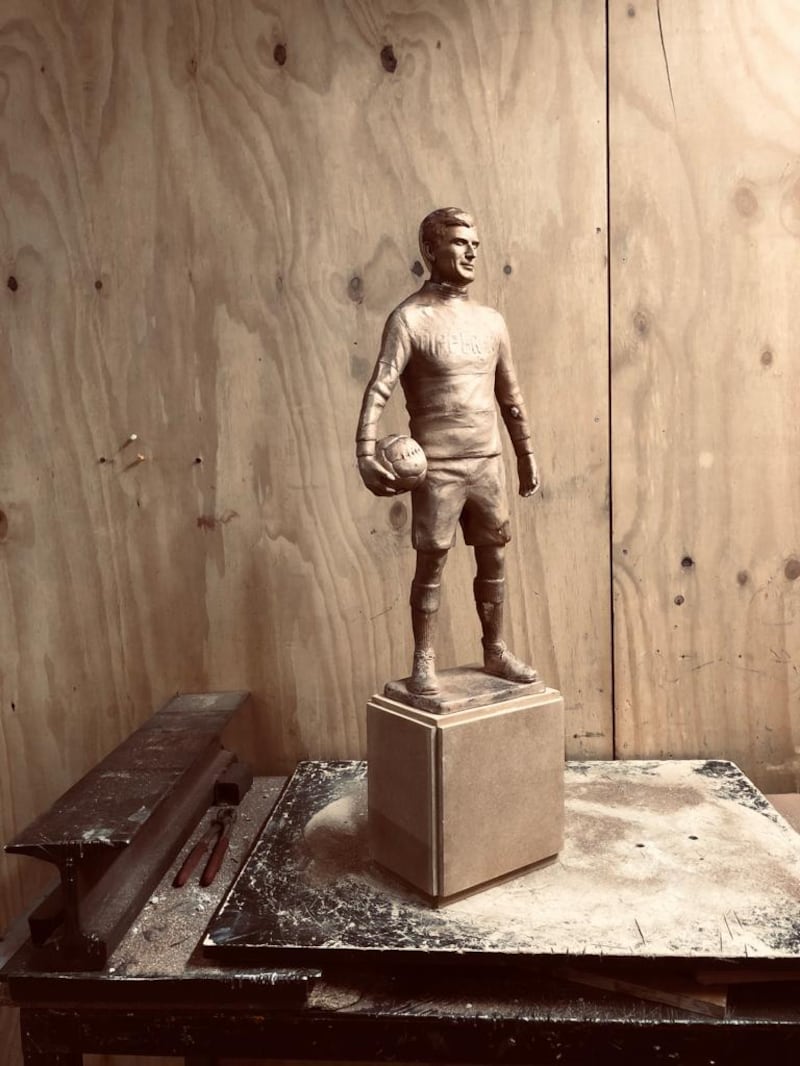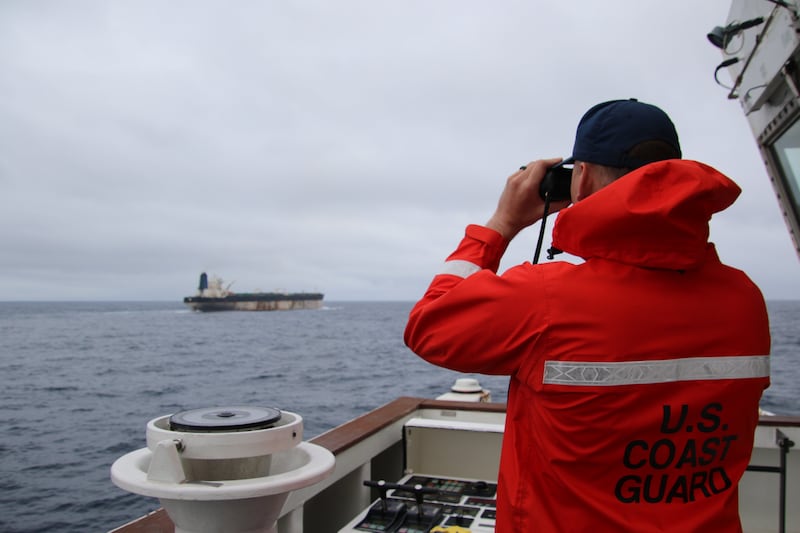Who was Michael Cusack? This Tuesday, November 28th, will be the 116th anniversary of his death at the age of 59.
In his biography Michael Cusack and the GAA, Marcus de Búrca wrote about the funeral on December 2nd.
“On the coffin, it was observed in the pale sunlight as it was lowered into the earth beside that of Cusack’s wife, was the inscription. ‘Micheál Cusack – Tuismitheoir Chumann na nCleas Luith Gaedheal; 1847-1906′.”
To describe him as “the parent of the GAA” was no exaggeration. Like many a founding figure, Cusack was impulsive and at times cantankerous. He quickly fell out with the association he did so much to establish, but by the time of his death there had been some reconciliation.
READ MORE
In his absence the GAA went on to become what it now is, but the parent was largely forgotten about. There is a stand in Croke Park named after him and county grounds in his native Clare, as well as Westmeath, but it took more than 100 years for a fitting monument to emerge in acknowledgment of this founding father.
Paul Ferriter was at a match in Croke Park at the turn of the last decade and had the idea for a statue behind the Cusack Stand.
“I felt it would add to the visitor’s experience, a bronze historical document. If I’m American and visiting or if I’m from Clare, we can ask the question: ‘who was Cusack?’ As the founding member and in the context of the Cusack Stand, it was obvious,” Ferriter says.
“It was coloured green to distinguish it from imperial statues, which tend to be brown and also to catch the lighting at night.”
Ferriter, a leading Irish sculptor, is from the GAA gene pool. Not common provenance for an artist but his father Seán played for the first Donegal team to win an Ulster minor title (1956) and captained the first team from the county to reach a senior Ulster final (1963). Three years ago he was inducted into the Donegal Sports Star Awards Hall of Fame. After retiring from the An Garda Síochána, he became a solicitor.
[ Michael Cusack trod on toes but Maurice Davin kept fledgling GAA togetherOpens in new window ]
So that’s what his son was doing in Croke Park, having played with St Brigid’s and featured in a Cumann na mBunscoil final there.
“I had done a lot of sculptures for great locations like golf courses and racecourses. I felt Croke Park could look well with something, so I approached stadium director Peter McKenna and he ran it past others and it was accepted as a good idea,” Ferriter says.
“I asked would there be anywhere on site that I could make the piece. Wouldn’t that be interesting? Cusack – sculpted in Croke Park. He came back and said, ‘We’ve identified a space at the top level. Would you be interested?’ I was and had a look and we turned it into a studio.”
McKenna was enthusiastic about the concept of an artist in residence and found the ideal workplace, high up in the Hogan Stand with access up steps to a view of the pitch.
“Seventh floor,” says McKenna. “Just as you hit the bend between the Hogan and the canal, it’s just there. So you’re looking straight into the southern sky and it gets light all year around. We cordoned it off and put a glass door there for him so he could work away and not be disturbed. It was included in the stadium tour so that people could see the artist at work.”
Ferriter has been back since to use the studio space and his statues of athlete Ronnie Delany and jockey AP McCoy were both sculpted there.
“People ask what’s your favourite piece? I’ll say Michael Cusack,” says Ferriter. “For two reasons. One, I am so proud to have a sculpture outside our national stadium. My dad played Gaelic, I played Gaelic. I’ve got AP McCoy in Cheltenham and I’ve done lots of famous race horses, lots of famous golfers, but Michael Cusack is absolutely my favourite.”


Every sculpture begins with a maquette, a small model of the finished work. McKenna has the Cusack maquette in his office.
The challenge for sporting sculptures in particular is capturing motion in bronze, the flow of a work when viewed.
“For me,” says the sculptor, “the Holy Grail is to capture the likeness but also a looseness in the modelling of the sculpture where I don’t aim at perfection; I aim at some level of looseness and freedom in the movement of the clay so that when it’s cast in bronze it reads more like a sculpture than a Madame Tussaud’s if you will.
“You’re sculpting a body first and then the clothes on the body. That’s where you get the flow – when the body underneath the clothes is accurate, everything reads well. I sculpt from the inside out, bone muscle, body, clothes. Don’t look from outside in.”
To that end, Ferriter enlisted a live model, complete with a big beard, to make sure the anatomy was precisely captured.


The reference for the work was the famous photograph of Cusack, posed with a blackthorn stick in his right hand and leaning with his left on a stone bench, a detail that has been turned into a scroll for the statue.
“Back in the day,” says Ferriter, “photographing people was a serious art form. That photograph made it easier for me to commit to a pose, to the clothes and his blackthorn stick. Whoever took that picture would have composed Michael Cusack beautifully and even the blackthorn is in balance. So for me, to sculpt, everything was in balance.”
The finished product was officially put on display on September 18th, 2011. Another monument was being established later the same day, Dublin’s first All-Ireland in 16 years and one of nine that would follow in the next 13 seasons.
GAA sculpture is a growth area. Last year there were two statues of All-Ireland winning football captains, John Joe O’Reilly and Bill Gannon, unveiled in Cavan and Kildare, respectively.
Asking Ferriter has he any favourites and he replies. “I like Mark Richards’s work. He is very talented.”
Richards is an English artist, who sculpted Gannon and 11 years ago, Nicky Rackard in Selskar. The latter is an evocative representation of the great Wexford hurler, the ball in his left hand with the stick held high in his right, as if readying himself to detonate a shot at goal.

With Cusack – 16ft tall, including a 5ft plinth – standing sentinel outside the GAA Museum, the obvious companion piece would be Michael Hogan on the other side of the ground. This was a live idea but like many other plans, fell victim to Covid.
“The GAA wanted to do it but the pandemic happened. I made a small maquette of Michael Hogan. Peter McKenna and people in Croke Park really liked it. It was about to start and then Covid happened. I’d love to do it,” Ferriter says.
McKenna confirms that the project was in its preliminary stages.
“There’s a maquette of Michael Hogan [on view in the museum’s Bloody Sunday exhibition], which is really good because there’s only one picture of him and it’s just a head shot. We had to defer because of Covid and the consequent financial difficulties. Can we really afford that expenditure when there’s such a pull on funds for other activities? It’s there for a better day.”


















